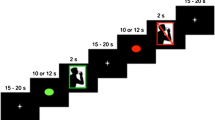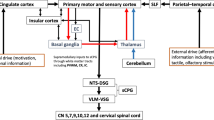Abstract.
A number of studies have demonstrated the involvement of parallel networks in the control of voluntary sequential motor procedures. We sought to determine whether a parallel network organization may be found for complex, sequentially based motor systems that are the product of both voluntary and automatic control processes. Specifically, we sought to determine whether the cortical organizational scheme for voluntary repetitive swallowing in adult humans is characterized by a hierarchical dual-projection model or by modules organized into parallel systems. We utilized functional magnetic resonance imaging (fMRI) to investigate cortical function during normal swallowing tasks in eight healthy human adults. Subjects performed both dry (saliva) and bolus (3 ml/bolus of water) swallows. Activation during swallowing tasks localized to sensorimotor areas (M1, S1, and SMA), S2, premotor cortex, posterior parietal cortex, cingulate gyrus, inferior frontal gyrus, the cerebellum, the insular cortex, auditory cortex, corpus callosum, and the basal ganglia and thalamus. Principal components analysis (PCA) of these regions revealed five functional clusters or modules: (1) sensorimotor areas and cingulate gyrus; (2) inferior frontal gyrus, S2, corpus callosum, basal ganglia and thalamus; (3) premotor cortex and posterior parietal cortex; (4) cerebellum; and (5) insula. Analysis of the functional relationship between these areas demonstrated two parallel loops defined by connections to either the cerebellum or insula and connected through the sensorimotor-cingulate module. Path analysis was performed to test the hypothesis of modules organized into parallel loops versus a hierarchical dual-projection model consisting of two separate, singular hierarchical serial pathways from the sensorimotor cortex or insula to the thalamus. These results support the model of modules organized into parallel loops (P=0.8), but not the hierarchical dual-projection model (P<0.0001). Organization of the control of voluntary repetitive swallowing into two parallel systems may confer the ability to effectively coordinate and integrate this highly complex sequentially based motor behavior.
Similar content being viewed by others
Author information
Authors and Affiliations
Additional information
Electronic Publication
Rights and permissions
About this article
Cite this article
Mosier, K., Bereznaya, I. Parallel cortical networks for volitional control of swallowing in humans. Exp Brain Res 140, 280–289 (2001). https://doi.org/10.1007/s002210100813
Received:
Accepted:
Issue Date:
DOI: https://doi.org/10.1007/s002210100813




